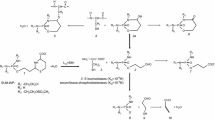Abstract
A new class of potent anticancer drugs, alkylphosphocholines has been recognized lately. Miltefosine (Hexadecylphosphochlorine, HPC) has been found to express select antineoplastic effect on human breast cancer skin metastases with simultaneous preservation of bone marrow proliferative activity and low clastogenicity. In the current study, we present data about the specific effect of two widely used cytostatics Cyclophosphamide (CP) and Epirubicine (ERb) applied separately or in combination with Miltefosine. C57BL6 mice were treated per os or intraperitonieally in doses corresponding to that in clinical use. Morphological, autoradiographic, ultrastructural and cytogenetic studies on spermatogenic, thymic and bone marrow cells were performed. It is found that compared with separate application, combinations of ERb or CP with Miltefosine slightly decreases spermatogonial proliferation and exerts milder effect on the structure of germinal and thymic cells. In addition, a lot of plasmocytes showed signs of active protein (antibody) synthesis. A significant reduction of aberrant chromosomes (clastogenicity) without changes in proliferative activity of bone marrow cells were recorded. In conclusion, the combine application of Miltefosine with ERb and CP decreased the destructive cytotoxic effects of ERb and CP on mouse spermatogenic and hematopoietic cells.








Similar content being viewed by others
References
Berger MR, Muschiol C, Schmaehl D, Eibl H (1987) New cytostatics with experimentally different toxic profiles. Cancer Treat Rev 14: 307–317
Berger MR, Tsoneva I, Konstantinov SM, Eibl H (2003) Induction of apoptosis by erucylphospho-N,N,N-trimethylpropylammonium is associated with changes in signal molecule expression and location. Ann N Y Acad Sci 1010:307–310
Brachwitz H, Vollgraf C (1995) Analogs of alkyllysophospholipids: chemistry, effects on the molecular level and their consequences for normal and malignant cells. Pharmacol Ther 66: 39–82
Dixon J, Brown M, Engelman L, Jendrich R (1990) BMDP statistical software manual. UCLA Press, Berkely
Duijsings D, Houweling M, Vaandrager A, Mol J, Teerds K (2004) Hexadecylphosphocholine causes rapid cell death in canine mammary tumor cells. Eur J Pharmacol 505: 185–193
Eibl H, Engel J (1992) Synthesis of hexadecylphosphocholine (miltefosine). In: Eibl H, Hilgard P, Unger C (eds) New drugs in cancer therapy. Karger, Basel, pp. 1–5
Georgieva MC, Konstantinov SM, Topashka-Ancheva M, Berger MR (2002) Combination effects of alkylphosphocholines and gemcitabine in malignant and normal hematopoietic cells. Cancer Lett 182:163–174
Hanson P, Malone L, Birchmore J, Nichols J (2003) Lem3p is essential for the uptake and potency of alkylphosphocholine drugs, adelfosine and miltefosine. J Biol Chem 278:36041–36050
Hofmann J (2001) Modulation of protein kinase C in antitumor treatment. Rev Physiol Biochem Pharmacol 142:1–96
Houlihan WJ, Lohmeyer M, Workman P, Cheon SH (1995) Phospholipid antitumor agents. Med Res Rev 15:157–159
Jendrossek V, Kurger W, Erlendbruch B, Eibl H, Lakomek M (2001) Erucyclophosphocholine-induced apoptosis in chemoresistent glioblastoma cell lines: involvemt of caspase activation and mitochondrial alterations. Anticancer Res 21: 3389–3396
Jendrossek V, Handrick R (2003) Membrane targeted anticancer drugs: potent inducers of apoptosis and putative radiosensitisers. Cur Med Chem Anti-Canc Agents 3:343–353
Jendrossek V, Muller I, Eibl H, Belka C (2003) Intracellular mediators of erucylphosphocholine-induced apoptosis. Oncogene 22: 2621–2631
Klenner T, Beckers T, Nooter K, Holtmann H (1996) Influence of hexadecylphosphocholine (miltefosine) on cytokine synthesis and biological responses. In: Nigam A (eds) Platelet activating factor and related lipid mediators 2. Plenum, New York, pp 181–187
Konstantinov SM, Topashka-Ancheva M, Benner A, Berger M (1998a) Alkylphosphocholines: effects on human leukemic cell lines and normal bone marrow cells. Int J Cancer 77:778–786
Konstantinov SM, Eibl H, Berger M (1998b) Alkylphosphocholines induce apoptosis in HL-60 and U-937 leukemic cells. Cancer Chemother Pharmacol 41:210–216
Konstantinov SM, Eibl H, Berger MR (1999) BCR-ABL influences the antileukemic efficacy of alkylphosphocholines. Br J Haematol 107:365–374
Krishna G, Nath Y, Ong T (1986) Inhibition of Cyclophosphamide and Mitomycin C induced sister Chromatid Exchanges in mice by vit. C Cancer Res 46(6):2670–2672
Krishna G, Theiss JC, (1995) Concurrent analysis of cytogenetic damage in vitro: a multiple endpoint-multiple tissue approach. Environ Mutagen 25: 314–320
Krustev L (1982) Mitochondria. In: Krustev L, Valkov I, Raichev R, Prokopanov Ch (eds) Ultrastructural basis of pathology (in bulgarian). Medizina i Fizkultura, Sofia, pp 92–119
Preston RJ, Dean B, Galloway S, Holden H, McFee AF, Sheldy M (1987) Mammalian in vivo cytogenetic assay analysis of chromosome aberrations in bone marrow cells. Mutation Res 189:157–165
Stekar J, Hilgard P, Klennee T (1995) Opposite effect of miltefosine on the antineoplastic activity and haematological toxicity of cyclophosphamide. Eur J Cancer 31A:372–374
Topashka-Ancheva M, Karaivanova M, Botev M (1989) Cytostatic and cytogenetic effects of Farmorubicin. Compt rend Acad bulg Sci 42:83–86
Topashka-Ancheva M, Botev M, Karaivanova M (1990) Cytostatic and clastogenic effects of combination of farmorubicin and extract of algae in experimental animals. Compt rend Acad bulg Sci 43:95–98
Unger C, Sindermann H, Peukert M, Hilgard P, Engel J, Eibl H (1992) Hexadecylphosphocholine in the topical treatment of skin metastases in breast cancer. Prog Exp Tumor Res 34:153–159
Vehmeyer K, Eibl H, Unger C (1992) Hexadecylphosphocholine stimulates the colony stimulating factor dependent growth of haematopoietic progenitor cells. Exp Hematol 20: 1–5
Author information
Authors and Affiliations
Corresponding author
Rights and permissions
About this article
Cite this article
Martinova, Y., Topashka-Ancheva, M., Konstantinov, S. et al. Miltefosine decreases the cytotoxic effect of Epirubicine and Cyclophosphamide on mouse spermatogenic, thymic and bone marrow cells. Arch Toxicol 80, 27–33 (2006). https://doi.org/10.1007/s00204-005-0010-z
Received:
Accepted:
Published:
Issue Date:
DOI: https://doi.org/10.1007/s00204-005-0010-z



